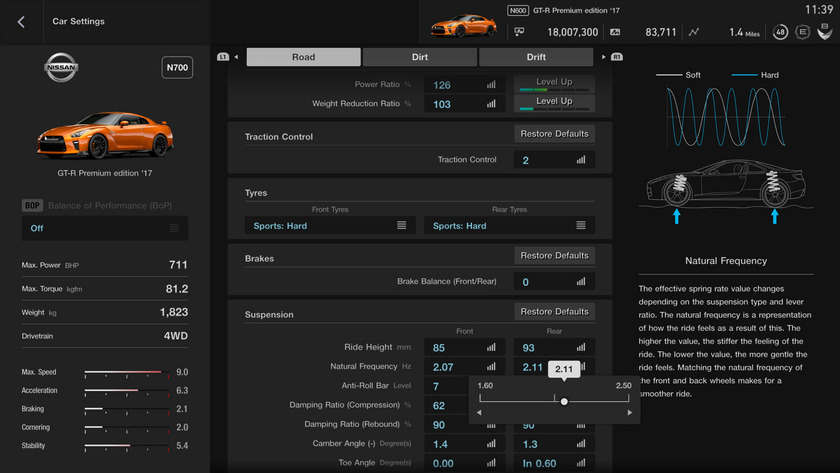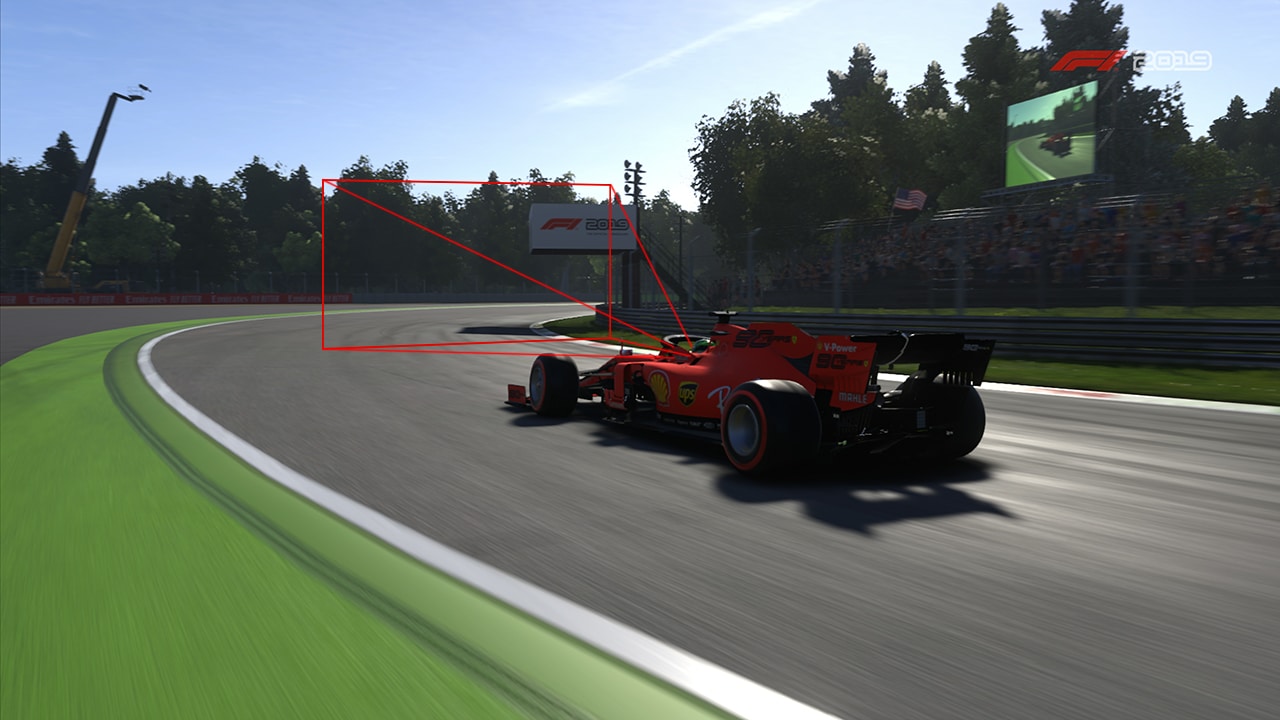

Deceleration setting is down to the point where going to engine braking does not introduce understeer. Then I set the acceleration setting down to the point where the car does not easily lock up the wheels on throttle opening at leaving the corner, which tends to cause me the most problems (as I drive with a wheel). I usually set the initial torque to 10, as it seems like a good compromise. I personally prefer to have a relatively "mild" LSD-settings.

3, 4, B, X) already have some toe-out at front which I don't often touch (around 0.25).

Front end will have toe-out at 0.10 which I will set higher if the corner entry doesn't feel like it has enough "bite" to it. Depending on the car I always start by setting the rear toe-in down to 0.40 (if it's higher) to take away the understeer the cars have, setting it lower if the car needs it. Bigger effect comes from the rear end settings. Toe-in for understeer, toe-out for oversteer. This is more or less a feel thing, but roughly all my cars are about 10mm higher at the back. I prefer to rise the rear end of the car a bit higher than the front, which increases the rotation of the car around its central axis. The spring stiffness I set to be as stiff as the suspension needs to be to prevent bottoming out at the height I use. Roughly I could describe my method as "low and stiff", as I often set the ride height as low as I can go without the car clipping on curbs or other track surface objects. This limits the body roll quite a lot, while introducing little oversteer due to the stiffer rear setting. Transmission flip instructions in another post in this thread.Īlmost every car I have I set this to 8 front, 9 back. After setting this up you just set the final gear to the top speed you wish to reach and you're always set to race on any given track. Basically this means you set up a close ratio gearbox (first and last gear being as close as they can be), with even spacing between gears. I try to avoid changing several things at once, as it may cause unwanted results which are hard to troubleshoot after. I always change things around by setting them up one to two clicks at a time, testing for few laps in between. I don't really touch the dampers, as I have no way to test how they act in game and testing them "by hand" doesn't really seem to make any sense, given how far just setting the springs get me. Ride height and spring stiffness (or "frequency" in GT Sport) My basic rule of thumb setting things up go in this order: I often do some minor touch ups on my cars when I use them more, if I feel like the initial setup is not "quite there". These are the basics I go through until I feel the car is set up so it feels like it fits my hands. For events on certain tracks I often modify these base tunes to the track, but the original setting will always be the primary one. My tunes on my cars are "generally good" setups which work ( for me) on any given track without modifying them. I have landed on Suzuka because it's pretty "neutral" track, with certain key points to highlight possible issues in the tune.

#Gran turismo sport tuning calculator full#
I always do my tunes at Suzuka East Circuit, after getting them "done" I verify that everything is done right on the full circuit. I hate the way the cars are set stock in the game, with "understeery" suspension and way too powerful LSD, causing me issues as I drive with a wheel (Logitech G29). They're made for GT6, but most of the content in those still apply. I would recommend reading these two guides to get the basics down, GT6 Tuning Guide 1.15 and General Tuning Guide (Updated 1.09). Having a degree in automotive engineering I have an idea how the game is supposed to act in simulating the driving, which goes a long way.
#Gran turismo sport tuning calculator driver#
I am in no way a fast driver nor am I a tuning expert, but I've always preferred to do my own tunings instead of using tunes made by someone else, which gives me a better feel on how the car works.


 0 kommentar(er)
0 kommentar(er)
